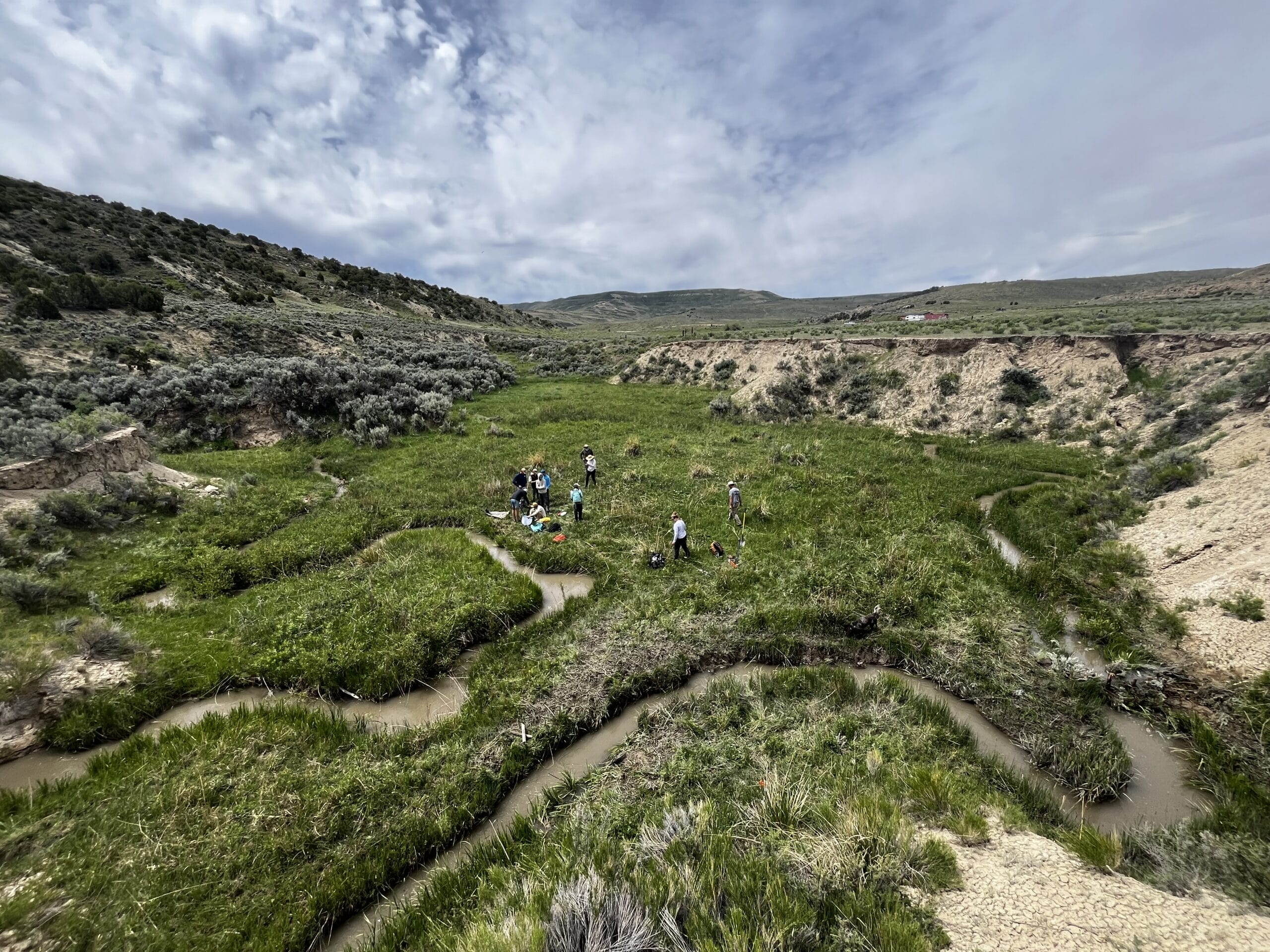Trout Unlimited hosts youth from around the country to restore Flaming Gorge watersheds
Years of volunteer work have led to a $1.5 million investment through the Bipartisan Infrastructure Law
Last week, Trout Unlimited completed one phase of its multi-year restoration effort work along Sage Creek near Greater Little Mountain. Sage Creek and its tributary Trout Creek, part of the Green River system, provide habitat for cutthroat trout, but that habitat has degraded over the years because of fire, flooding, fluctuations in Flaming Gorge Reservoir, prolonged drought and other land use issues.
The Sage Creek drainage and its tributaries, Gooseberry Creek and Trout Creek, are in the heart of the Greater Little Mountain ecosystem. Trout and Sage Creeks wind through a mix of Bureau of Land Management (BLM), State of Wyoming and private lands.
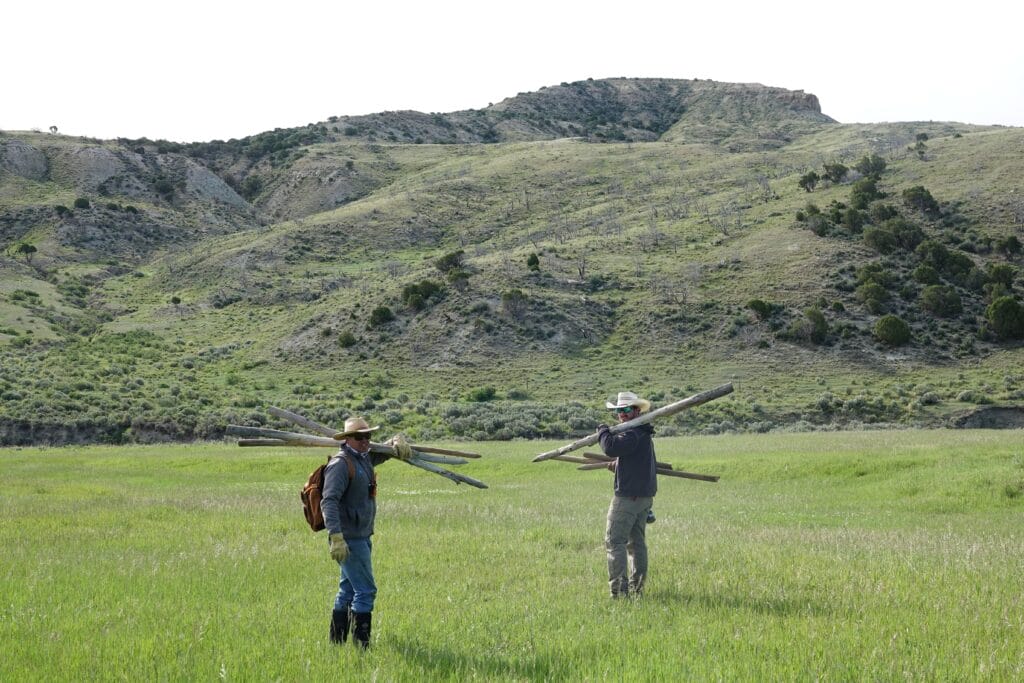
“Although these creeks are small, they are important because they eventually feed into Flaming Gorge Reservoir and the Colorado River Basin,” said Nick Walrath, Green River senior project manager at TU. “Because of changes in volume at the reservoir over the past decades, it’s become increasingly important to support these waterways.”
TU, Wyoming Game and Fish Department, the Wyoming Department of Environmental Quality, the Wyoming Wildlife and Natural Resource Trust, the BLM, the U.S. Fish and Wildlife Service Partners for Fish and Wildlife Program, private landowners and others have worked in this area for decades.
At work on the landscape
Over the past few years, TU and partners have built dozens of artificial beaver dams, reconnected historic channels and floodplains, improved riparian fencing and improved irrigation diversions to provide better fish passage.
Beaver dam analogs (BDAs) – which are essentially man-made beaver dams – are porous walls of sticks, logs and leaves that slow the flow of water in one part of the stream and retain much of this flow behind the “dam,” allowing some of this backed-up water to seep into the floodplain.
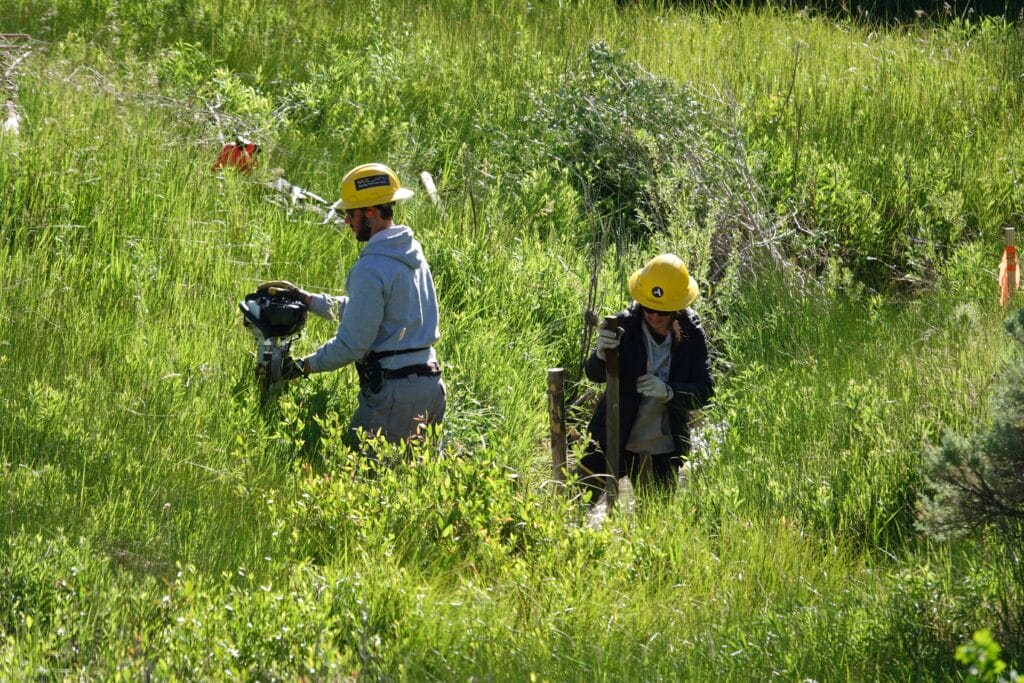
This beaver-like engineering helps prevent channels from incising into themselves and away from the natural floodplain.
“Our goal with the beaver dam analogs is to essentially make the areas adjacent to the creeks act like giant sponges,” said Walrath. “It allows for colder, cleaner water to continue to flow in the hottest months of the year, benefitting all water users – ranchers, recreationalists, anglers and wildlife.”
These efforts’ success is already apparent with colonies of beavers now maintaining and even improving upon the first set of BDAs built years ago. Working in unison, the collective efforts of mammals have allowed the stream bed to rise as much as four feet in some areas, vastly improving stream bank vegetation for wildlife and righting decades of degradation.
“The creeks had almost carved small canyons in areas around Sage Creek because of the ebbing and flowing of the reservoir below,” said Walrath. “We needed more hands to make this restoration work possible and have worked closely with the Wyoming Conservation Corps and our new TU Expedition volunteers to install BDAs downstream.”
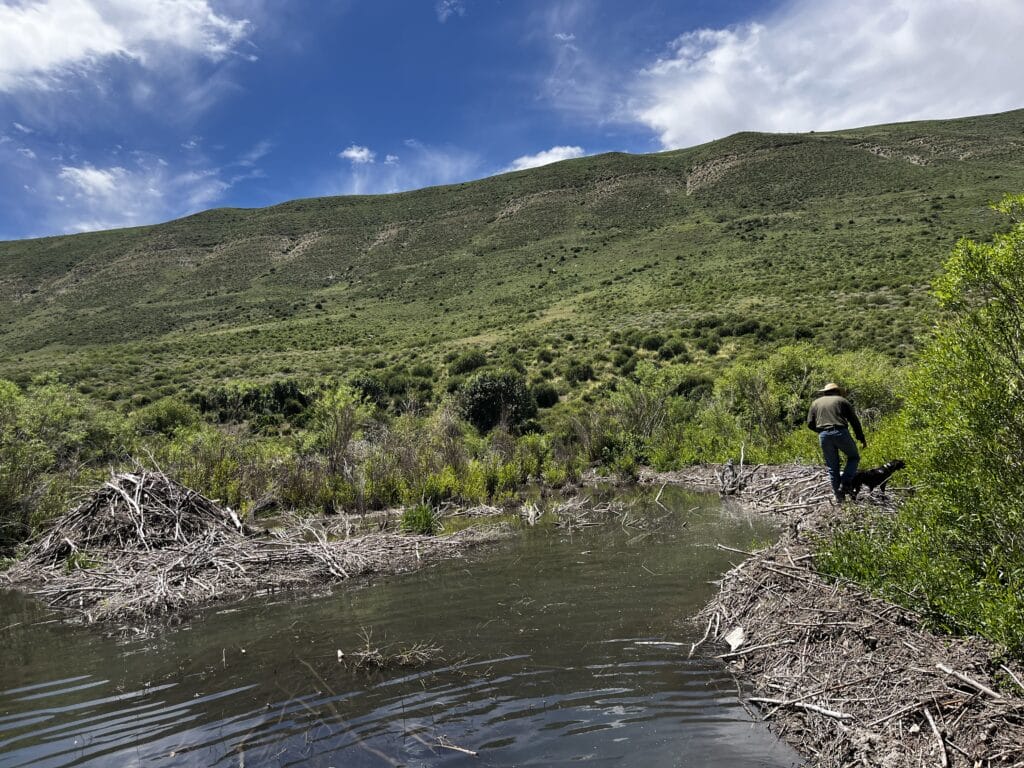
Braving rattlesnakes for good
During the week, a mix of college-aged students from the Wyoming Conservation Corps and high school students from the first ever TU Expedition braved high winds and rattlesnakes to help build 50 BDAs along Sage Creek. The watershed now boasts more than 100 of these structures.
“The Partners for Fish and Wildlife Program has been excited to collaborate with the private landowners, TU, the Conservation Corps and volunteers in recent years on Trout Creek,” said Dave Kimble of the U.S. Fish and Wildlife Service Partners for Fish and Wildlife Program. “Not only have the projects benefitted instream trout habitat, but they are restoring and protecting the ‘green zone’ that is important for so many species in the sagebrush ecosystem. The Bipartisan Infrastructure Law has enabled the Fish and Wildlife Service to increase funding for crews building these types of projects in recent years, and this is a prime example.”
Funded through a grant by the BLM, TU Expeditions is teaching young people about conservation work. While on these 10-day trips, students from around the country engage in hands-on volunteer work, host community events around conservation and education, and, of course, fish.
“Given the diversity of terrain and history of the area, Wyoming was the natural place to host TU’s first ever Expedition,” said Walrath. “The muscle provided by the Expedition students and the Wyoming Conservation Corps have no doubt made a positive impact on this landscape for years to come.”
More good work to come
Thanks to a track record of success of the restoration so far with this project, the Bureau of Reclamation also announced $1.5 million in funding to continue this project work downstream through the Bipartisan Infrastructure Law in late 2023. These funds will restore 453 acres of valley floor habitat, improve water retention and habitat in 5.6 miles of Sage Creek, reduce erosion and protect almost 50 miles of native cutthroat trout habitat from invasive trout in the Flaming Gorge Reservoir downstream.
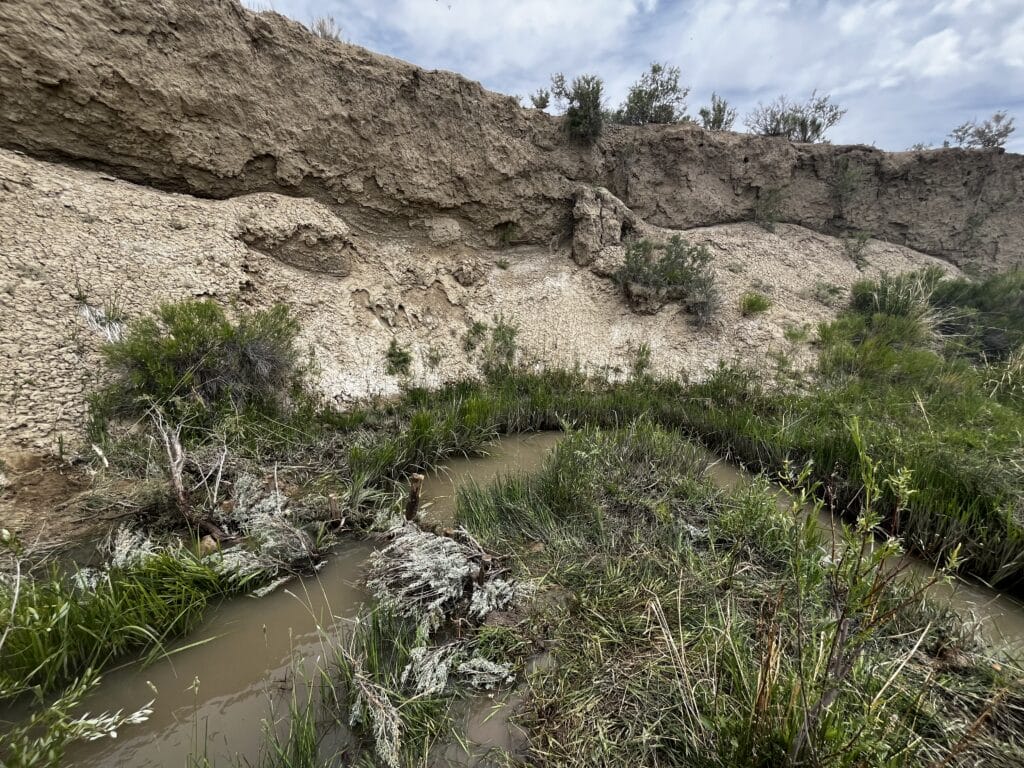
“It’s great to see such interest and cooperation from the local population, the State of Wyoming, and federal agencies in restoring this area,” said Walrath, who lives in Green River. “We all know how important the Flaming Gorge landscape is to our way of life, so we’re looking forward to working with the Bureau of Reclamation to start on the next phase of this project.”
After more than a week of work in Wyoming’s deserts, the Wyoming Conservation Corps and TU Expedition members have proved to be more than up to the task and can’t wait to explore more of the Cowboy State in the future.



